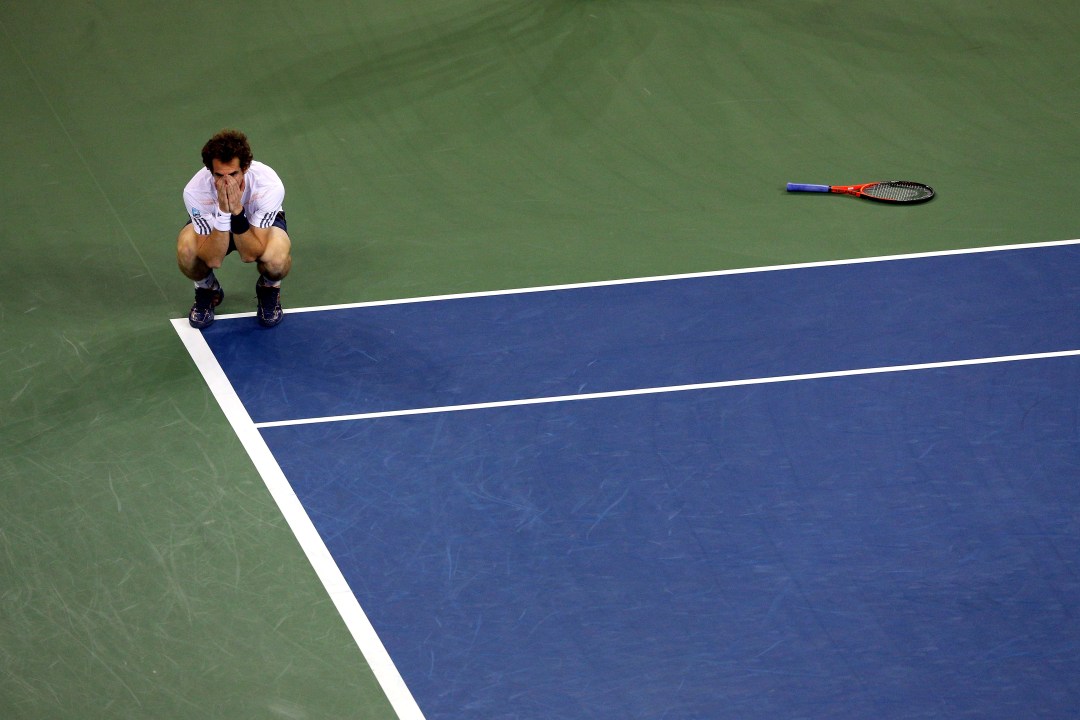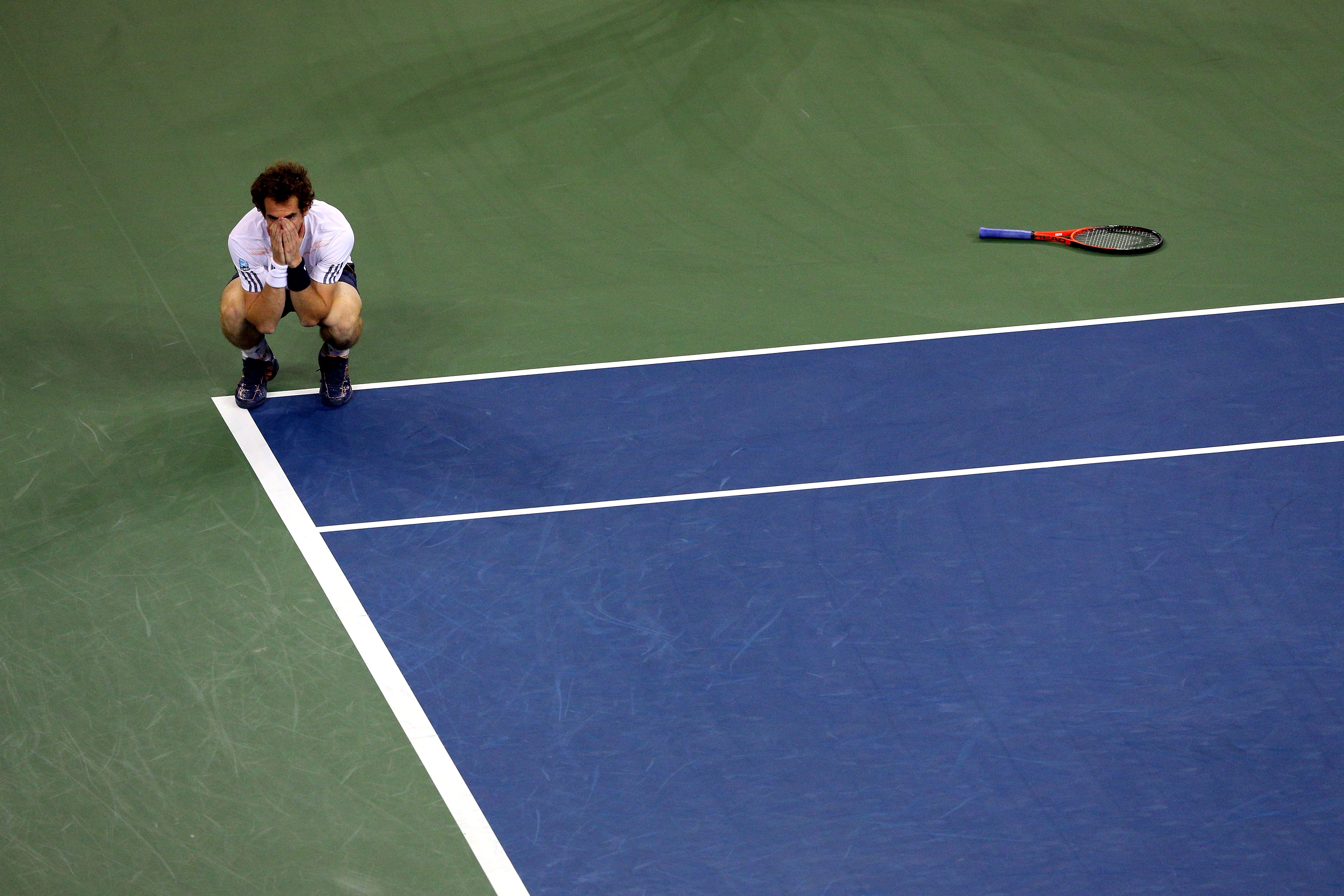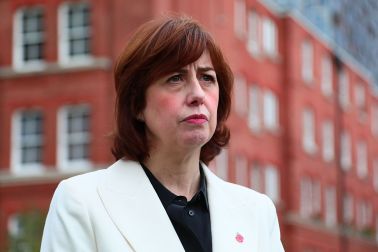And then there were four. If Andy Murray’s accomplishments still make him the least of the great quartet ruling tennis in this golden age that’s about as useful a comment as remarking that Roberto Duran was outshone by Sugar Ray Leonard, Marvin Hagler and Tommy Hearns. It may be true but it doesn’t matter very much.
There have been other great eras in tennis – Borg, McEnroe and Connors for one – but there’s never been a quartet quite like Roger Federer, Rafael Nadal, Novak Djokovic and, yes, Andy Murray.
Consider this: eight men shared the ten Grand Slam tournaments preceding Roger Federer’s first Grand Slam victory (Wimbledon 2003). The subsequent 37 tournaments have been divvied up between eight players. Or, if you wish to begin counting from when Nadal emerged in Paris in 2005, the last 31 Grand Slam titles have been shared between just five men. I think it’s reasonable to suggest Juan Martin del Potro’s 2009 US Open victory is an outlier.
In the last six years the Big Four have provided almost 85% of Grand Slam finalists. The full record is this: Federer 14 final appearances in the last 24 tournaments; Nadal 13, Djokovic 9 and Murray 5. The Rest of the World has combined to reach 7 finals these past half dozen years.
That’s the context within which Murray’s achievements should be measured. That’s something to remember when you feel like nutting the next idiot mocking Murray as a “choker” or some frail weakling who’ll always let you down. As the man himself puts it: “Maybe if I played another era maybe I would have won more, but I wouldn’t have been as good a tennis player.”
And he is – and has been for some years now – a very, very good tennis player. Mercifully we can now ditch the label “Greatest Player Without A Major” but it’s important to remember that even when that badge was pinned to Murray’s chest it short-changed his ability. Only people who don’t watch very much tennis – ie, much of the Wimbledon audience – could think the likes of Michael Stich, Thomas Johansson, Carlos Moya or Yevgeny Kafelnikov were better players than Murray simply because they’d won a Grand Slam or two.
Even so when Djokovic hauled himself back to level last night’s US Open final at two sets apiece it looked for all the world as though Murray might become the first man in the history of the open era to lose his first five grand slam finals. I found myself wondering if he was destined to become tennis’s Raymond Poulidor, remembered forever as “The Eternal Second”. There are worse fates than that, you know. Poulidor finished on the Tour de France podium eight times but never won it. Yet he’s better remembered and more fondly recalled than many who won La Grande Boucle.
Which is to say that there are many ways of determining greatness and context matters. Poulidor had the misfortune to race in two eras, the first dominated by Jacques Anquetil, the second by the young Eddy Merckx. Murray might appreciate all this.
Happily we can put such thoughts away now. Murray’s victory in New York completes a summer of wonder for British sport. Who would have thought an Englishman might win the Tour de France and a Scotsman the US Open tennis title? These are bizarre but rather thrilling times.
It seemed fitting that Murray’s greatest victory would be a heart-straining affair. Not because of some tosh about British or Scottish sports stars suffering some aversion to winning easily but because it’s only proper that his breakthrough be as epic as the rivalries that bestride his sport.
It has not been easy. Half a generation behind Federer, Murray could appreciate there was no shame in losing to the Swiss master. Similarly, Nadal’s astonishing shot-making and physical prowess – defeating him sometimes seems as simple as eliminating Jason Bourne – ensures there’s no dishonour in defeat there either.
It’s a little different with Novak. Born a week apart the pair, rivals since they were 11, are also friends. Indeed in their pupdom Djokovic was perhaps Murray’s best friend on the tour. Watching Djokovic’s rise to greatness must have been an odd experience for Murray: mingling delight for his friend with anguish that he was not yet capable of making quite the same leap. Yet Djokovic also showed what could be done. Inspiration begat emulation.
Perhaps it’s worth spending a moment contemplating the things that make Murray such a special player. Begin with what he does not have. There is no overpowering weapon in the Murray arsenal that can be deployed to rescue him in times of trouble. His forehand is solid – certainly more dependable than it used to be – but not the equal of those owned by Federer, Nadal or Djokovic. His serve is better than it was too but, again, not a decisive advantage. Murray is just twelfth on the ATP Tour in his percentage of second-serve points won. (The top 3? Federer, Nadal and Djokovic.) Whether going cross-court or heading down the line, the Murray double-handed backhand can be a beautiful thing, but on any shot-for-shot comparison you might be hard pressed to look at Murray’s game and think that here you’ve got a great champion.
He’s not quite a flowing thoroughbred like Federer or a terrifying machine like Nadal (albeit a machine now susceptible to breakdown) and though he’s added power to his game he’ll rarely blast an opponent off the court in the manner of a Lendl. Which is part of his appeal. His games are interesting because he’s a craftsman not someone who sets about his rivals with a cudgel. Instead he toys with and teases his opponents. He is, at heart, a finesse player in an age of power tennis. You wonder how some modern players might fare if forced to play with a wooden racket; you fancy Murray would have little problem using these prehistoric tools.
Brad Gilbert, Murray’s former coach, used to say that his client reminded Gilbert of the great Slovak cat Miloslav Mecir and there’s some value to that comparison. Mecir didn’t have Murray’s athleticism or defensive, scrambling ability but he bamboozled opponents and was never less than fascinating to watch. His career, injury-wracked, delivered less than it might have (he was dismantled by Lendl in the two slam finals he reached) though, like Murray, he has an Olympic gold medal in his cabinet. Mecir was a master of spin and slice and change of pace and Murray has plenty of that as well. He lays traps for his opponents and even the best of them are often caught. On the other side of the ball, it helps that he’s in the Connors and Agassi class of great returners too.
In another era Murray might be considered the consummate tennis artist of his time. It’s his misfortune to be in play at the same time as Roger Federer, a painter whose work is more obviously beautiful and certainly more accessible than Murray’s.
I don’t know what Murray has done to make so many Britons dislike him quite so much. I suspect a reappraisal is currently underway anyway. Nevertheless, what irks is not that people prefer Roger or Rafa to Murray (that’s fine) but that so many of the reasons given for disliking Murray are so damn petty. He doesn’t smile enough! He shouts at himself! He speaks in a monotone! He made a joke about not supporting the England football team! Give me a break, people, and just look at the game he’s got. Haters gonna hate but they look even more ridiculous than usual today.
(For what it’s worth: I think Murray is prone to shyness with people he does not know and trust and that his dry, laconic style is the kind of humour ill-suited to life in a televised bubble in which, more often than not, the questions you’re asked are utterly fatuous.)
There’s this too: to a degree unusual amongst top-class sportsmen Murray acknowledges his doubts. Last night he was at it again, albeit this time swaddled at last in the comforts of victory: “But still today, before the match, when I was sitting in the locker room beforehand, there are still doubts. You’re still thinking, ‘If I lose this one, you know, no one’s ever lost their first five finals.'”
Perhaps that’s negative; it strikes me as human. Federer, the master of the humblebrag, would not, one thinks, be quite so candid or, if you prefer, his candour might not persuade you of its truth. Nadal and, to a lesser extent, Djokovic these days, seem unplagued by such nervousness.
This time Murray mastered himself. “I just didn’t really want to be that person.” No and nor did we want him to be that person either. It’s been a long road and often a difficult one. By the standards of top-class tennis Murray comes from an improbable place and this too makes his triumph all the sweeter.
The Djokovic-Murray (presently scored 8-7 in the Serb’s favour) has several years to run yet. Nadal may return almost as good as ever and old Federer’s not quite done yet. There are many remarkable things about this era and not the least of them is that while we each have our preferred players the quality of the tennis and the calibre of the men playing it is such that it is difficult to begrudge any of them their successes, even when those victories come at the expense of our own favourites. This too is unusual.
If Murray is still playing catch-up he has cleared the biggest hurdle. Having done it once he can do it again and it would be a foolish punter who wagered against him doing so.
Tennis? Bloody hell. Enjoy this moment and this era. We’ll rarely, if ever, see its like again.








Comments